Features
SRP Celebrates 35 Years of Science and Solutions
As we celebrate the 35th anniversary of the NIEHS Superfund Research Program (SRP), we look back on some of the significant contributions that our grantees have made towards advancing environmental and human health. These examples are just a few of the many important outcomes of the program.
Detecting and Cleaning Up Contaminants
Two SRP mandates focus on developing methods and technologies to detect hazardous substances in the environment, as well as to reduce their amount and toxicity. SRP grantees have led innovative detection and remediation approaches, which have had significant economic and societal benefits , such as creating small businesses, enabling land and water reuse, creating sustainable technologies, reducing exposures, and initiating university-industry partnerships.
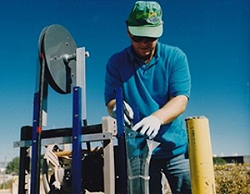
Researchers led by Mark Brusseau, Ph.D., of the University of Arizona SRP Center combined mathematical models with laboratory and field studies to better understand the many factors that affect contaminant transport in the environment and can cause cleanup efforts to stall. This approach can identify cost-effective solutions to make remediation more efficient and better protect human health.
Led by Keri Hornbuckle, Ph.D., scientists at the University of Iowa SRP Center have revolutionized our understanding of polychlorinated biphenyls (PCBs) as air pollutants by developing new methods to identify and quantify sources of the pollutants. In response to their finding that children can be exposed to PCBs in schools with old building materials, the researchers are applying their approach to help schools address PCB contamination as efficiently as possible.
The concept of microbes degrading organic contaminants, like trichloroethylene (TCE), was further developed by SRP-funded researchers. Researchers at the University of Washington, led by Milton Gordon, Ph.D., Lee Newman, Ph.D., and Stuart Strand, Ph.D., developed innovative approaches to enhance phytoremediation of chlorinated solvents using poplar trees. They were the first to genetically enhance poplar trees to increase removal of trichloroethylene. Over time their approach became more efficient, sustainable, and cost-effective, while also serving as a launching pad for other scientists and small businesses to explore new research areas.
Similarly, Kate Scow, Ph.D., and her team at the University of California (UC), Davis were exploring the ability of local microbes to degrade TCE in sediment, and the factors that control this process. Her team also isolated a bacterial strain capable of completely degrading methyl tert-butyl ether , determining that the strain frequently occurs naturally and can be stimulated by changing environmental factors, such as adding more oxygen.
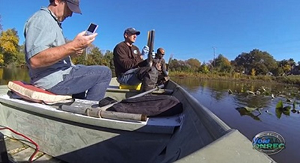
Specialized activated carbon pellets, developed by Upal Ghosh, Ph.D., of the University of Maryland, Baltimore County, and collaborators, bind to PCBs and reduce their bioavailability, or uptake by fish and other aquatic organisms. The technology - which has been proven effective in the field and resulted in millions of dollars in estimated cost savings at clean-up sites - can also be combined with microbes that break PCBs down, reducing their toxicity.
Today, risk assessors consider the bioavailability of a contaminant - the amount that can be absorbed into the body and potentially cause harm - when making decisions. SRP-funded researchers contributed heavily to this approach, which helps make risk assessments and exposure prevention strategies more realistic and effective. For example, Martin Alexander, Ph.D., of the Cornell University SRP Center revealed how the bioavailability of organic contaminants in soil can change substantially over time due to the dynamic physical and chemical processes that occur. They reported how these changes can vary from place to place, and are influenced by the presence of bacteria .
Revealing Effects and Understanding Risks to Human Health
The other two SRP mandates center on developing advanced techniques to detect, assess, and evaluate the effects of hazardous substances on human health, and methods to understand the risks to human health that such exposures pose. SRP-funded basic biomedical research has advanced knowledge and led to additional clinical, public health, policy, and economic benefits, as documented in our 2020 commentary .
Tools and Methods for Risk Assessment and Analysis
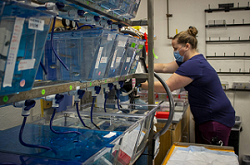
For more than two decades, Richard Di Giulio, Ph.D., and team with the Duke University SRP Center and Mark Hahn, Ph.D., and team of the Boston University (BU) SRP Center have used killifish to understand the toxicity, mechanisms, and health effects of polycyclic aromatic hydrocarbons (PAHs) and PCBs. Populations of the small fish have adapted to survive and reproduce in polluted waters.
The Duke team discovered that killifish's resistance to pollutants is at least partly genetic. They also analyzed how adapting to contaminants leaves killifish more susceptible to other stressors. Similarly, the BU team found genes in the aryl hydrocarbon receptor (AHR) signaling pathway - which regulates an animal's biological response to chemicals - that likely play a role in resistance.
Celebrating a Breadth of SRP Science
Over the years, the SRP Science Digest has offered in-depth highlights of grantee work on a variety of topics, including
- Environmental mixtures
- Developmental origins of health and disease
- Disease prevention and intervention strategies
- Bioremediation and the microbiome
- Exposure identification
- Addressing PFAS in 2019 and 2022
- Under-resourced communities
- Latent disease risk from exposures
- Immune system effects from exposures
- Individual susceptibility
- Plants as detection devices
- Bioremediation and materials science
To see past SRP Features on these and other topics, please see the NIEHS website archive.
At the UC Berkeley SRP Center , researchers and collaborators led by Martyn Smith, Ph.D., developed a new approach to help risk assessors predict the toxicity of chemicals based on shared characteristics. Called the key characteristics approach, the method helps risk assessors more easily identify, organize, and summarize the potential health risks of many different chemicals. By defining specific molecular changes that lead to toxicity, the approach also helps decision makers prioritize resources for studying potentially harmful chemicals more closely. The team included experts from 35 academic and research organizations, five U.S. government agencies, two intergovernmental agencies, three SRP centers, and three pharmaceutical companies.
Since 2015, the International Agency for Research on Cancer has used the approach to evaluate more than 50 different chemicals, and other agencies worldwide are beginning to apply it. According to Smith, the approach is also being used by EPA's Integrated Risk Information System program and by CalEPA to inform decision making.
Many other SRP grantees are also devising new ways to assess chemical toxicity, because many existing approaches are expensive, time-consuming, and may require animal testing. These approaches include cell-based methods, chemical tests, and computational modeling that considers chemical structure to improve who scientists conduct toxicity tests. In addition, SRP supports researchers who are developing tools to study the environmental fate and transport of contaminants. Understanding how chemicals migrate through, and interact with, the environment is important for assessing potential human exposure and toxicity. The June 2018 Science Digest described these efforts in detail.
Discovering Health Effects
Through decades of research, SRP grantees at the UC Davis SRP Center have translated basic research in insects and rodents into promising new therapies and pain treatment options for dogs, horses, and humans. Center Director Bruce Hammock, Ph.D., and his team discovered soluble epoxide hydrolase (sEH), an enzyme in the body that breaks down fatty acids - nutrients that are involved in many important bodily functions, such as inflammatory response. Now the researchers develop sEH inhibitors to treat pain in humans and animals through EicOsis LLC , a small business funded in part by NIEHS.
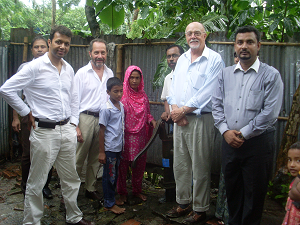
SRP funding also helped Columbia University researchers to establish and grow the Health Effects of Arsenic Longitudinal Study (HEALS), a large, prospective cohort study in Bangladesh that has become an indispensable resource for understanding the health effects of arsenic exposure and the underlying biological mechanisms. First established in 2000 with 12,000 participants , the project expanded to include over 35,000 participants through the leadership of former Columbia SRP Center Director Joseph Graziano, Ph.D., center researchers Alexander van Geen, Ph.D., and Habibul Ahsan, M.D.
Among many findings, researchers learned that targeting a process called methylation, which affects expression of genes, could improve arsenic metabolism and prevent disease in people exposed to the metal. The same study showed that genetic differences may partially explain differences in metabolism and therefore people's varying responses to arsenic exposure. They also identified genetic differences that influence vulnerability to arsenic-induced skin lesions, an early hallmark of toxicity. Their findings may help explain why some people exposed to arsenic develop skin lesions while others exposed to the same levels do not.
The HEALS cohort has also launched the careers of many junior investigators who have used this resource to pursue new research questions. For example, Brandon Peirce, Ph.D. and Tiffany Sanchez, Ph.D., who have explored differences in telomere length - DNA sequences at the ends of chromosomes that protect them from damage - and exposure to mixtures of metals, respectively.
Interventions to Protect Health
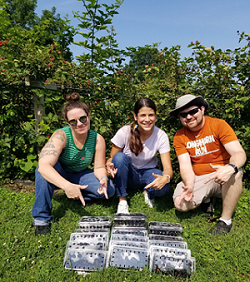
At the University of Kentucky SRP Center, grantees uncovered how a person's diet can protect against the harmful health effects of exposure to PCBs. The team, led by Bernhard Hennig, Ph.D., integrated studies in cells, rodents, and human populations to explore the intersection between diet, chemical exposures, and health. They have revealed that a type of fat in diet, found in processed vegetable oils, can worsen the cardiovascular effects of PCBs. They also discovered that nutrients such as vitamin E and omega 3-fatty acids can reduce cell damage from PCB exposure and that a type of fiber found in vegetables can potentially protect against cardiovascular problems related to PCB exposure.
People can be exposed to a myriad of harmful chemicals following an environmental disaster, such as a hurricane. Led by Timothy Phillips, Ph.D., researchers at the Texas A&M University (TAMU) SRP Center developed a sorbent material that can bind to and capture these hazardous chemicals, reducing their uptake by humans and bioavailability in wide range of conditions. In the field, the team demonstrated that the sorbents can capture per- and polyfluoroalkyl substances (PFAS) in soil and prevent plants from taking them up. They also modified their sorbents so they could be edible and showed that they can protect human health against several harmful substances, including metals, PFAS, and aflatoxin - a fungal toxin often found in crops. More recently, they showed that the sorbents can be used as a barrier to reduce skin exposure to chemicals in polluted water.
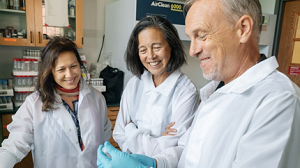
Research by SRP grantees has informed local, state, and federal guidelines and regulatory decisions to protect human health from hazardous exposures. For example, studies by SRP-funded researchers at Dartmouth College informed the New Hampshire Department of Environmental Services' decision to lower the drinking water limit for arsenic. Their decision was rooted in research by Dartmouth which followed children exposed in utero to arsenic and other contaminants. The scientists found connections between low arsenic exposure and adverse birth outcomes in infants, including decreased fetal growth, and disruptions to the endocrine system, blocking hormones involved in metabolism and immune response. In mothers, the researchers observed that arsenic increased risk of developing gestational diabetes and elevated blood pressure.
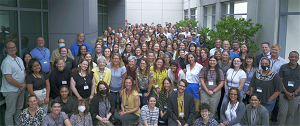
Researchers from several SRP Centers also informed new drinking water advisories and guides for clinicians related to PFAS. The drinking water advisory, released in June 2022 by the U.S. Environmental Protection Agency (EPA), cites work by the University of Rhode Island (URI) SRP Center led by Phillipe Grandjean, M.D., Ph.D. The researchers showed that PFAS exposure was associated with reduced immune response to certain vaccinations in children and revealed the level of PFAS exposure necessary to elicit this negative immune response. The guide for clinicians, by the National Academies of Science, Engineering, and Medicine (NASEM), was developed by a committee which included SRP-funded researchers from the University of New Mexico (UNM), University of Kentucky, North Carolina State University, and Harvard. The committee looked at Grandjean's work related to PFAS and dysfunction of the thyroid gland, high blood pressure, and increased risk of more severe cases of COVID-19.
Engaging With Affected Communities
Moving research beyond scientific journals and into tangible products that people can use to make health-protective decisions in an essential element of SRP. The SRP 2020 Strategic Plan (2MB) emphasizes the importance of research translation and of communicating and engaging with communities to accelerate the application of research advances and protect public health. Importantly, SRP researchers work to target their messages to specific audiences to better communicate potential risks and strategies individuals and communities can use to better protect their health.
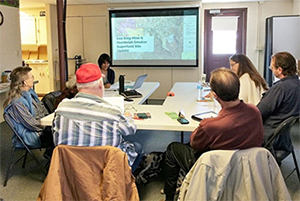
SRP grantees work closely with affected communities to respond to their environmental health concerns, share research results and other information to help reduce their exposures, and engage them directly in the research process. For example, researchers at the University of Arizona SRP Center have hosted science camps for high school students, trained local promotoras - peer educators - to promote environmental health literacy, and collected oral histories to understand community experiences and exposures. In response to community concerns about exposures from nearby abandoned mines, the team also helps residents of Superior, Arizona monitor air pollution using plants. Similarly, at the University of North Carolina at Chapel Hill (UNC) SRP Center, researchers led by Kathleen Gray, Ph.D., produced the Eat Fish, Choose Wisely guide, which includes a color-coded map for people to identify areas where they can catch fish that are safer to eat. Another group, at the Northeastern University SRP Center, created a mobile app to report individual research results back to study participants.
Videos can make science more accessible and inviting to a wider audience, while increasing message effectiveness. Researchers across SRP-funded institutions have created videos to explain health risks, such as Dartmouth's video about the health risks associated with arsenic and videos by the Duke University SRP Center and the University of Washington about how to safely eat fish from contaminated waterways. The team at Duke also developed videos about safely gardening in areas where soil may have contaminants. Another group, led by the University of Puerto Rico, a collaborator of the Northeastern University SRP Center, developed a series of videos to communicate risks to pregnant women, such as from exposure to chemicals like phthalates in the home or related to COVID-19, and what they can do to protect their health.
Pivoting to Address Emerging Challenges
SRP's transdisciplinary approach to studying the role of combined exposures from mixtures of contaminants to psychological stressors, infectious diseases, and climate disasters - is revealing new insights to prevent harm while protecting health.
For example, researchers led by Smith and Stephen Rappaport, Ph.D., of the UC Berkeley SRP Center proposed the exposome as a new paradigm for how epidemiologists measure environmental exposures. SRP has continued to excel in this area, developing unique and effective tools and methods to characterize the exposome, as well as novel analytical and computational strategies to assess exposure to complex mixtures.
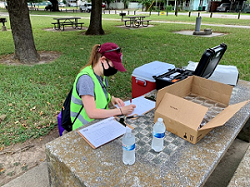
In addition to better understanding complex combined exposures, SRP networks and research infrastructure allow grantees to quickly respond to new and emerging problems.
For example, SRP grantees have responded quickly to understand and address community concerns in the aftermath of disasters, from the Gulf oil spill, to the Gold King Mine spill, and other disasters such as hurricanes and wildfires. Researchers also pivoted their research and expanded their collaborations to apply their knowledge to respond to the COVID-19 pandemic.
Sharing and Integrating Data to Address Complex Problems
Over the years, SRP has shifted focus from being reactive to existing environmental health problems to being more predictive and identifying strategies to prevent such problems at the outset. A key component of this shift involves sharing and integrating diverse datasets across research projects to gain a more complete picture, while also leveraging advances in data science to create more robust predictive models and tools.
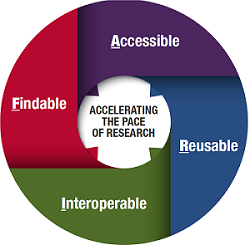
Sharing knowledge and data across disciplines is not yet common practice and can be challenging. Through collaborative data projects, SRP grantees shed light on common challenges and solutions to integrating data across diverse scientific domains to tackle complex environmental health problems.
The groups also worked together to develop new platforms, tools, and workflows that can address specific common research questions, while revealing new insights not previously possible. For example, by combining data across three different populations , researchers at the UNM, Columbia University, and UC Berkeley SRP Centers were able to better characterize sources of arsenic exposure that should be included in risk assessment.
Training the Next Generation of Scientific Leaders
A hallmark of the SRP is providing rigorous multidisciplinary training opportunities to pre- and post-doctoral researchers. These impressive trainees go on to make significant contributions across diverse sectors.

So far, 79 trainees have received prestigious K.C. Donnelly Externship awards to conduct research beyond their own institutions. By promoting collaboration across other SRP centers and agencies, the awards enable knowledge-sharing and skill-building essential to forging scientific careers.
In addition, 25 outstanding SRP trainees have been recognized with the annual Karen Wetterhahn Memorial award, which recognizes and supports outstanding early career scientists.
to Top



